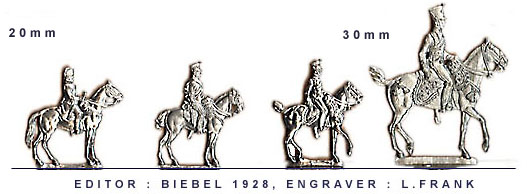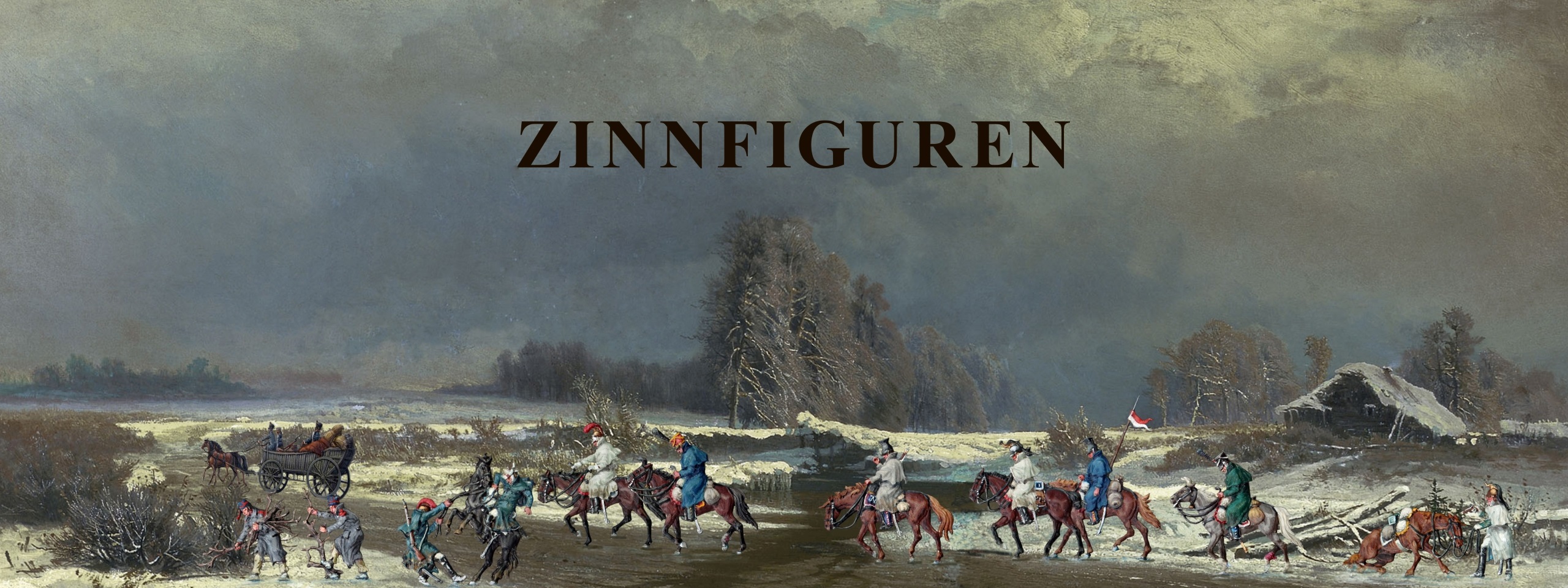WHAT IS A FLAT?
Flats are two-dimensional miniatures, which were cast from slate moulds. Though they exist in different scale, most (95%) of them are 30mm high (eye-level of man on foot) and about 2mm thick. Flats of 19. Century have been smaller (28mm), modern intend to exeed even 31-32 mm size. Other ranges of "scales" are 20 mm, 40mm and there are some larger 60 to 80mm flats most of them depicting personalities pp.
Flats generally consist of an alloy from tin (55%), lead (40%) and antimony (5%) i.e. flats should be correctly termed neither lead nor tin but pewter figures. Their German term runs "Zinnfiguren" i.e. tin figures.
Manufacture started in Germany during 19th century flats being thought for kids toy. There were millions of figures sold throughout Germany and Europe at the end of century. From about 1920 these miniatures became a collectors item.
Today exist about approximately 100.000 figures, covering every aspect of mankind. Though military figures are still in majority, there are many civilian themes covered.
According to my own interest, these pages covering mainly figures of Napoleonic period. This site is edited to no commercial purpose. It shall be an offer in information to collectors and maybe acquire some new collectors to this subject.

For further reference in English language I recommend Michael Taylor´s book
THE ART OF THE FLAT TIN FIGURE
Windrow & Greene 1995 ISBN 1 85915 070 5. Due to interest of its author, it covers ancient and mediaeval epoch mainly.
For further reference in English language I recommend Michael Taylor´s book THE ART OF THE FLAT TIN FIGURE. Due to interest of its author, it covers ancient and mediaeval epoch mainly.

Napoleonic era counts about 15.000 figures; approximately 200 of them depicting Napoleon himself.
It is impossible to list and comment all figures of this era, as it has actually done for (approx. 2000) ancient Romans (Friedrich Giesler," Romans in tin" ISBN 3-7927-1209-1; German language only). Mr. Giesler lists all figures existing (48 editors) with a description of every figure released.
At section called "collectors resources" I published some lists of gone editors and of flats engraved by my favorite engraver Ludwig Frank of Nuremberg (1870-1955). He was probably the best engraving flats throughout his entire life starting at Heinrichsen in 1886.This does not mean other figures are less in quality.



